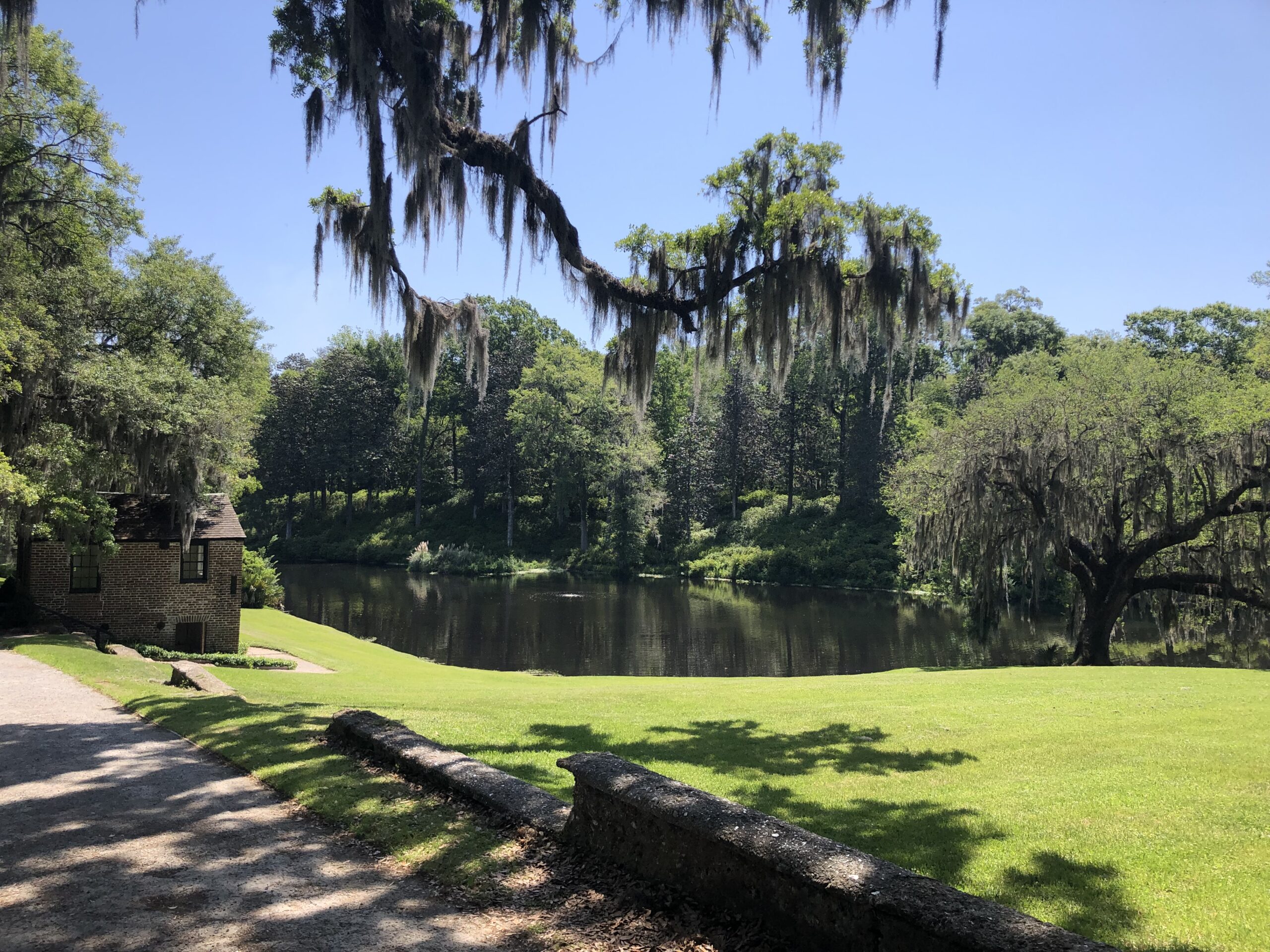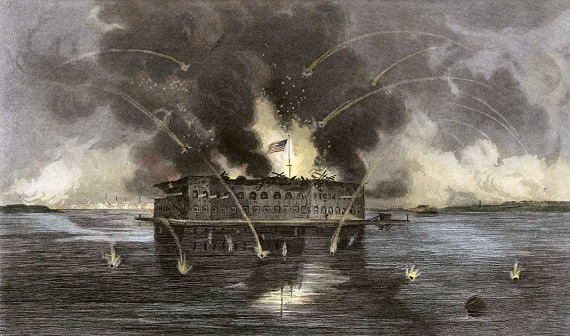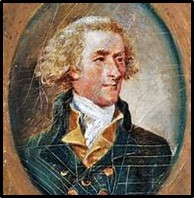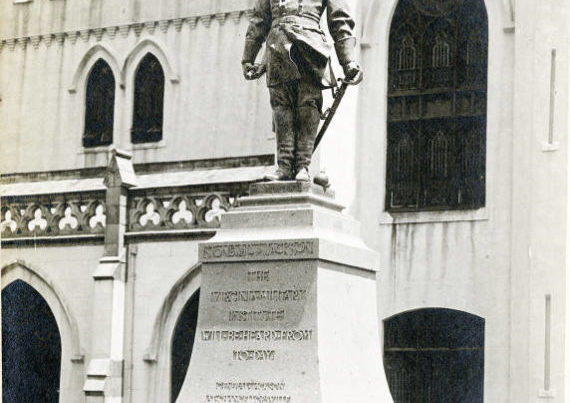While other interests come and go, I believe the permanence of my obsession with Dixie is rooted in its manifestation of enduring principles, to which I am stubbornly loyal. Despite the Abbeville Institute’s dedication to the Southern tradition in its entirety, our study seems to hover around the Confederacy and the War for Southern Independence, and for good reason. In my opinion, the War is the summation of the tradition. Thomas Paine observed that the advantage of a panic is, “…that they are the touchstones of sincerity and hypocrisy, and bring things and men to light which might otherwise have lain forever undiscovered” (Paine, The Crisis, 1776). The Confederacy gives the world a concentrated dose of the Southern Tradition and reveals a glaring consistency.
I was blessed to be able to immerse myself in this consistency by attending the Abbeville Institute’s 20th Anniversary Conference in Pine Mountain, Georgia and then traveling through the surrounding areas. The Conference was not what initially motivated me to make such a long and expensive trip. It was an Abbeville webinar on William Gilmore Simms. This webinar inspired me to read a biography on Francis Marion, and I was so moved by the character of the man and the sprit and sufferings of South Carolina during the American Revolution, that I asked my husband to take me to the Palmetto State for my birthday in April. Days after he agreed to the trip, the conference date and location were announced and it was decided that we would see Georgia and South Carolina.
My personal focus for the last two years has been the Confederacy and the War for Southern Independence, but my acquaintance with Marion brought my attention back to the American War for Independence, and as we took our journey to the Low Country we noticed that the historical focus was oriented much more toward colonial times. I was disappointed to find that most Southern people are ashamed to put their Confederate history on display and that it is often relegated to hallways, closets, and obscure small towns, but I was relieved that it could still be found by the tenacious historian. Colonial history is much more celebrated, at least for now, and we relished its abundance in the cities of Savannah and Charleston.
Although it is only allowable to champion the spirit of ’76 at this point, it is absolutely consistent with the spirit of ‘61, even if the majority of people cannot yet see it. I had this brought to my attention while visiting Middleton Place. While the docents did their best to illuminate the history of the Middleton family, my guide, a renowned Southern gentleman and scholar, had no rival. As we were listening to a volunteer relate the most notable actions of the Middleton generations, I heard a woman comment that it was astonishing that what she perceived as contradicting values, would exist in the same family. I mentioned this to my personal guide and we agreed that it instead revealed an admirable consistency.
Middleton Place, located fourteen miles northwest of Charleston on the Ashley River, was first established in 1675 and was home to four generations of illustrious statesmen. It was acquired by Henry Middleton through his marriage to Mary Williams in 1741 and became a flourishing rice plantation, landscaped garden, and family residence. In 1774 Henry Middleton was elected to the First Continental Congress at the age of fifty-seven and became its second president. Henry’s son Arthur, considered more “extreme” in his patriotic zeal, served during the Second Continental Congress in 1776 at the age of thirty-four, and signed the Declaration of Independence. The Middleton family’s service to their country continues with Arthur’s son, another Henry, who was a Governor of South Carolina and a Minister to Russia.
It is at this point that our uninformed tourist believed that the Middleton family turned on itself and decided to destroy the country their ancestors built. However, the savvy Southern scholar will recognize in Henry’s sons Williams and John Izard the same burning dedication to Liberty possessed by their grandfather, Arthur, and will rejoice in finding their signatures on the South Carolina Ordinance of Secession. After all, the South Carolina Ordinance of Secession easily could have been titled the “South Carolina Declaration of Independence”. I often wish it had been since it seems so difficult for people to apply the words, “…whenever any form of government becomes destructive of these ends (securing rights), it is the Right of the People to alter or to abolish it, and to institute new Government, laying its foundation on such principles and organizing its powers in such form, as to them shall seem most likely to effect their Safety and Happiness” (Declaration of Independence, 1776). I visited The Old Exchange in Charleston where both documents are displayed and felt gratitude that there were men who could identify unchanging principles.
Despite the tumult of the times, the Middleton brothers seemed to hear the voice of Patrick Henry, one of the most ardent advocates for American independence in 1776, who knew the true meaning of American union, advocating American liberty as the top priority for consideration in adopting the Constitution in 1788. They recognized the predicted warping of the Constitution and took the necessary measures to check its bloated power. The cost to these Middleton men for affixing their signatures to the Ordinance and supporting the Confederacy was to have Middleton Place ransacked and burned by Union troops. Only by signing the Oath of Allegiance, were the Middletons able to salvage a living. Our own Karen Stokes has given us a wealth of resources on this topic and I refer you to her exceptional work for further study.
South Carolina paid the price for Independence not once, but twice, and I wince when I reflect on the magnitude of that transaction. Her sufferings from 1776 to 1782 and again from 1861 forward were so severe that for me, she will always be the standard of what is required to obtain Paine’s “celestial article”. The Confederate battle flag does not fly in South Carolina, but I saw the Palmetto Flag everywhere. I can only hope that future generations will eventually connect these banners and follow in the footsteps of their noble ancestors.







We Southerners are NOT ashamed of putting our Confederate symbols out publicly. We are avoiding the negative consequences of doing so. Twenty years ago I had a Bonnie Blue Flag sticker on my vehicle and I was accosted by another driver on the highway. He was genuinely deranged by the site of my flag sticker. We Southerners are avoiding the hassle of being doxxed, harassed, vandalized and attacked, and we know that most of our local and state scalawag governments will probably not back us in a court case or tracking down vandals etc. It’ simpler to avoid the hassle and just go underground. We haven’t changed and we are not ashamed, we are waiting out the current zeitgeist as the country slowly turns toward nullification and secession, and the accurate history of that era becomes known, again. That is happening and gathering speed even as I write this.
Sad to say, many Southerners are very much ashamed of the flags and symbols of their forefathers. The success of the statue-smashers and their public-official-allies is proof enough of that. Many (indeed, most) Southerners are ashamed of these symbols and of their forebears because they have been lied to their whole lives. The average Southerner is drowned in a deluge of lies from toddlerhood to deathbed. As Patrick Cleburne, John Gordon, S.D. Lee, R.E. Lee, and countless others warned, history has been written by the victors (and their carpetbag-Quisling collaborators), to the detriment of the Southern population. As R.L. Dabney warned, the public school system has been an engine of lies and atheism. The number of Southerners who know the truth of their past is not so large as it ought to be. To follow in the footsteps of one’s noble ancestors, one must first be made aware that one’s ancestors were in fact noble. The ongoing degeneration of the Yankee Empire may hasten the knowledge of the truth and it may not. Only time will tell.
Many thanks to Mrs. Paine for an excellent and encouraging piece.
Respectfully, where do you get your data that tells you that “many” Southerners are ashamed of our Confederate past? The things you note otherwise in your reply are common knowledge among the Southerners with who I come in contact. Any time I, or those with whom I associate, come in contact with a Southerner who feels shame due to all the Yankee brainwashing I refer them to the many books available with the real history of that era, and the web sites, and the books written in the last 20 odd years that detail the perfidy of the North before, during and after that era. For example: “The Strange Careers of the Jim Crow North: Segregation and Struggle outside of the South” Copyright Date: 2019
Published by: NYU Press. Written about Yankees, by Yankees; or Dr. Wilson’s numerous works; or any number of others. It’s like having an intervention but in a very mild way. Very encouragingly I run into young Southerners who have already figured out the basics of the truth of that era all on their own and are enthusiastic when given specifics sources they can read/watch/hear.
Forgive me if I misinterpreted what I witnessed. I understand the need for judicious caution and I do not presume to tell anyone how to fight his battles. My intent is always to praise, encourage, and embolden my beloved Southern brothers and sisters. When I consider how thoroughly the region was gutted and then flooded with counterfeit culture, I am amazed that anything survived. It is a testament to the character of Southern people that so much good has endured. As always, you have my sincere admiration. juliej9469@gmail.com
My apology to you, Ms. Paine. You have no need to apologize, IMHO. My intent was to inform and not to chastise. I greatly appreciate this column and all your other columns as well. Please keep up the great work. God Bless You and your family.
The Battle Flag may not fly in South Carolina anymore, but it’s often seen in rural southwest Missouri.
A very fine piece. Thank you, Mrs. Paine.